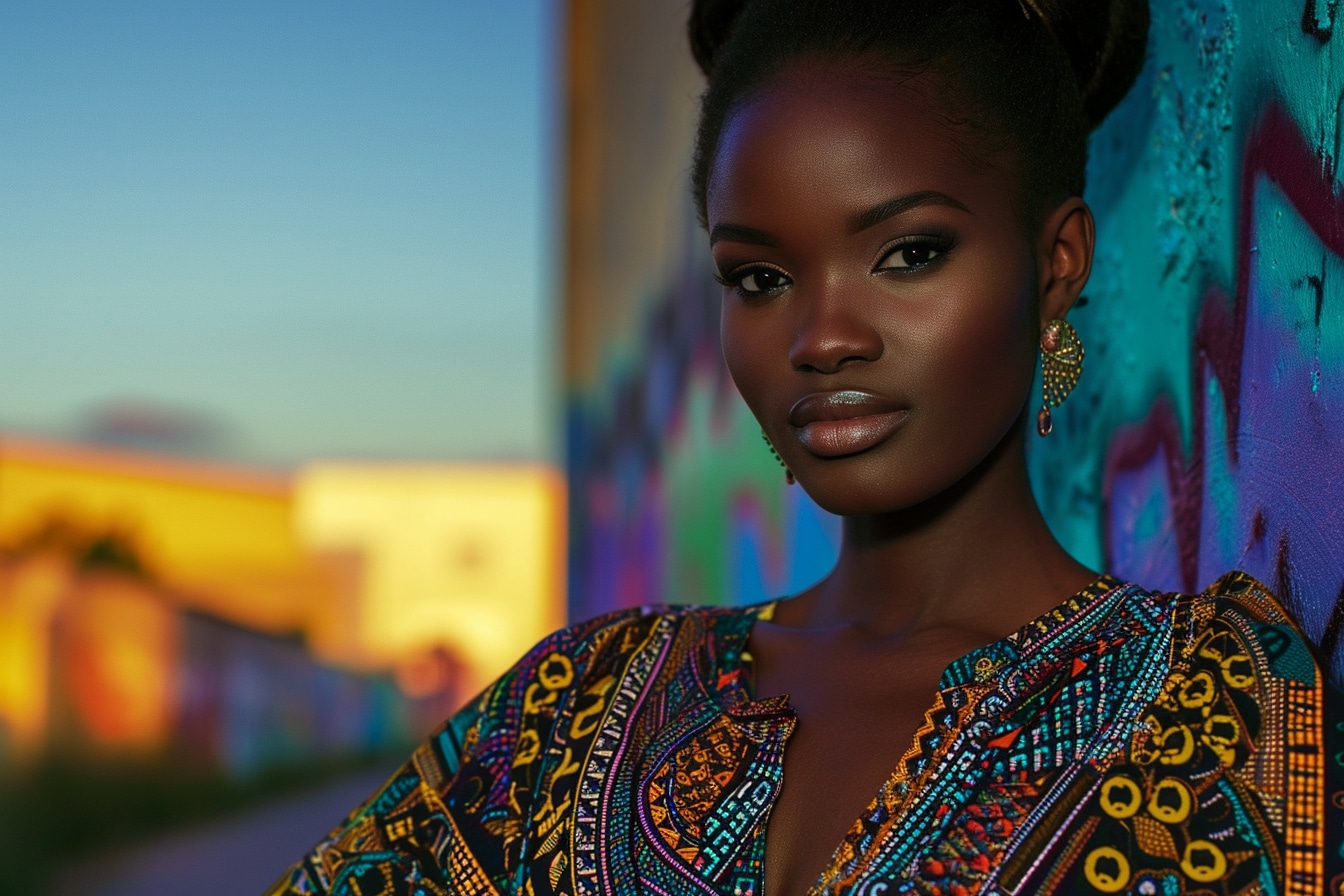Modern African fashion is a vibrant testimony to the continent’s cultural richness, finely blending tradition and modernity. The evolution of African fashion, from its origins to the contemporary era, reflects not only social and historical change, but also creative appropriation in the face of globalization. African designers have made their mark on the international scene, breathing new energy into the fashion industry and influencing their counterparts around the world. They play a leading role in fusing traditional elements with modern currents, giving rise to bold trends. In the next few paragraphs, we’ll take a look at how far African fashion has come, the impact of the continent’s designers, and the promising future of a fashion that celebrates a heritage while looking resolutely to the future.

Evolution of African fashion: from yesterday to today
African fashion is a kaleidoscope of cultures, symbolizing a history rich in color, pattern and profound meaning. Once governed by ancestral traditions, clothing design in Africa was rooted in the sacred soil of ethnicity and age-old practices. Each piece told a story of identity and belonging, often linked to the pomp and pageantry of chiefs and ritual ceremonies.
Over time, the winds of change have blown across this textile landscape, carrying with them the threads of an irrevocable metamorphosis. The advent of the post-colonial era saw the rise of printed fabrics such as wax and bogolan, becoming emblems of the local entrepreneurial fabric and modern vehicles of a pan-African identity.
The passage to the new millennium marks a decisive turning point with the creative effervescence of young African designers, who have boldly married traditional heritage with avant-garde trends. Globalization and the digitization of the world have given rise to cultural diplomacy, where fashion serves not only as an aesthetic, but also as a means of dialogue between peoples.
Thus was born the modern African fashion we know today – a dazzling symbiosis where rich bazin rubs shoulders with minimalist Western cuts, where loincloth converses with urban streetwear trends, and where each creation is an ode to the diversity of artistic expression on the black continent.
African designers and their influence on the international scene
In a whirlwind of colors, textures andcultural expressions, African designers are making their mark on the international scene. Reflecting a rich and diversified heritage, their creations trace the contours of a modern African fashion that dialogues with the universal while preserving its essence. Far from confining themselves to local catwalks, these ambassadors of fabric and embroidery are crossing borders to dress the world.
Designers like Alphadi, Imane Ayissi and Laduma Ngxokolo use their cultural heritage as an inexhaustible source of inspiration. They combine traditional materials such as bogolan and wax with avant-garde cuts that appeal to an international public always on the lookout for distinction. These pioneering talents breathe into their art not only the brilliance of Ghanaian Kente or the elegance of Senegalese embroidery, but also a resolutely contemporary stylistic audacity.
Their influence continues to grow as they bring something new to the table: an innovative aesthetic imbued with profound narratives. Their collections tell stories, those of a plural Africa ready to assume its identity in the global mosaic of design. By building bridges between fashion metropolises such as Paris, New York and Milan and the African continent, these designers are giving birth to a universal clothing language charged with authenticity.
At every international show, with passion and conviction, they demonstrate that Africa is not simply a fantasized reservoir of exoticism, but a real creative powerhouse influencing current and future trends in the global fashion landscape. Their high-profile presence at major fashion weeks testifies to their cross-cultural dynamism, and is a vibrant plea for deserved recognition on a global scale.
The fusion of traditional and contemporary fashion: trends and the future
In the vast workshop of creation, African couturiers excel at weaving links between tradition and modernity. Modern African fashion can be recognized by its singular ability to fuse fabrics steeped in history with avant-garde cuts. Each piece of clothing becomes a visual hymn to ancestral cultures, while boldly embracing contemporary silhouettes.
The combination of kaleidoscopic wax fabrics and high-tech textiles offers an unprecedented palette for stylistic expression. Designers wield this duality with virtuosity, infusing their collections with an essence that transcends time and borders. The resounding success of international fashion shows emblematizes the beginning of a new era in which African fashion is asserting itself as a major force on the global design scene.
The trends resulting from this alchemy promise to be rich and diverse, sketching out a future where embroidered dresses with ethnic motifs sit unabashedly alongside structured suits made from recycled fibers. We are witnessing a permanent reinvention in which each collection tells a new story, transcending the ephemeral nature associated with the fashion world. This movement is not only aesthetic, but also conveys profound values: those of a continent in the midst of a cultural renaissance, proudly carrying its heritage into the future.
Witnessing this metamorphosis gives rise to a collective awareness of the importance of preserving cultural heritage while embracing technological progress, underpinned by an unquenchable thirst for innovation. The growing popularity of these hybrid creations proves their relevance in our changing world, where multiple identities meet and dialogue harmoniously.
We recommend these other pages:
